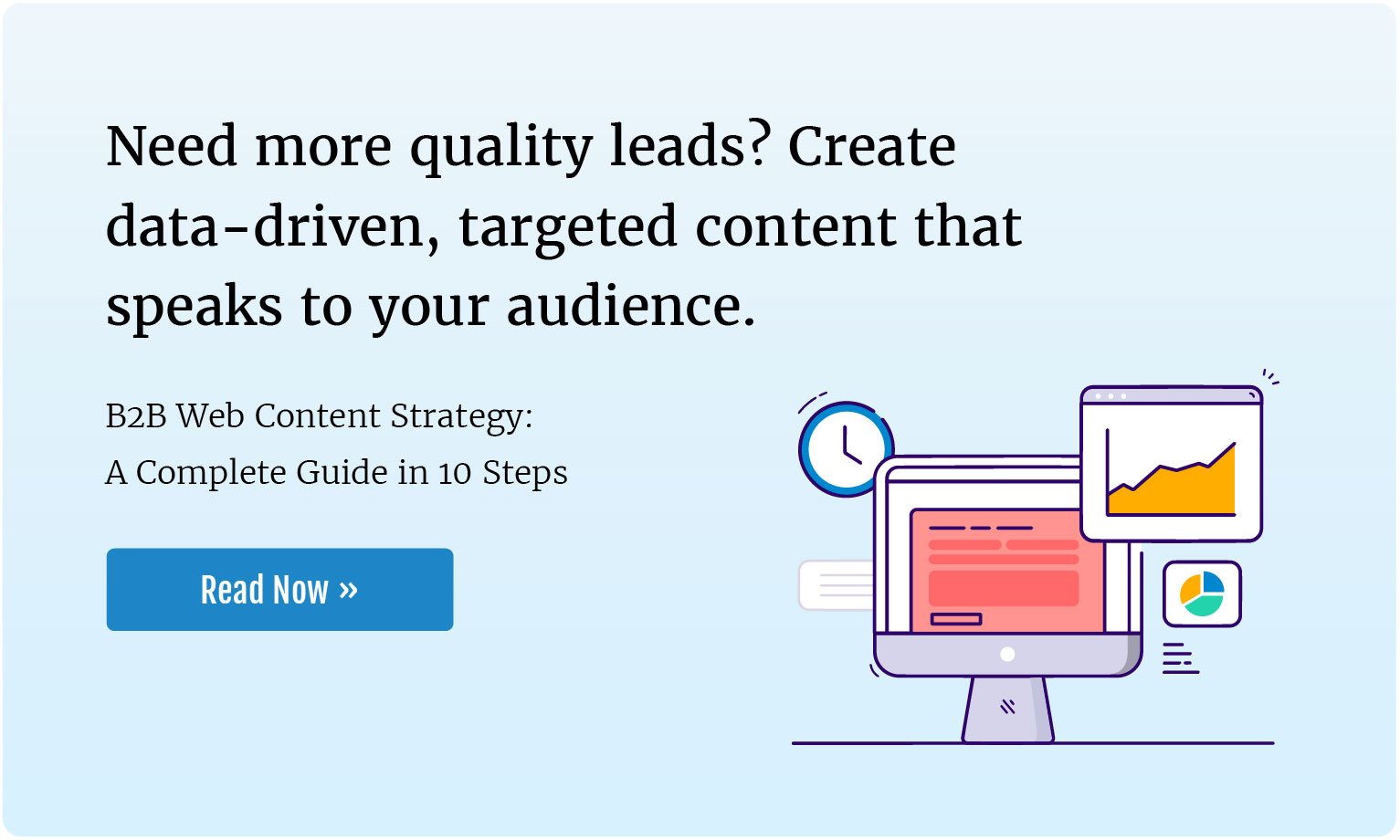You’re in the middle of planning content. If you’re already overwhelmed with keywords, topics, and content ideas, analyzing your competitors’ content might seem like one more tedious process.
However, researching your competitors is an opportunity to uncover their strengths and weaknesses and identify topics they either haven’t written about or haven’t written about well.
With this juicy intel, you can seize open opportunities and beat competitors out of search positions by arming the audience with more or better information.
Here’s how to do it.
1. Identify your content competitors.
Step one is to identify who you’re fighting with for content exposure. Before that, however, it’s smart to create a spreadsheet you can use to audit each of them to circle specific opportunities you can integrate into your strategy.
The example below includes columns for:
- Companies
- Channels
- Quantities of content
- Core topics of content
- Subtopics covered by content
- Tone of the writing
- Frequency of publication
- Quality of content
- Quality details
I know, that's a lot, but I promise it's useful.
.jpg?width=600&name=5f9b19e5e05cd51416979de6_bteu0B05f4NFFQ_cL3oFLUyf1w14c1YLjz8IkytXMZ-LUWqhh1ZH2kYNpKODeXmPx1vQMhj9LGu1nAghXQ3ncSeld2sXuEJitvxQrY8zNp4gOzAkZaPOAZN8LlKD0E7T2QtW19ob%20(1).jpg) Source: Google Sheets
Source: Google Sheets
Okay, time for some research. The first thing to know is that the companies you might consider to be competitors often aren’t the ones you’re going up against in search results.
Local competitors, for example, may not even be doing content marketing, in which case they’re not worth worrying about here. This is where SEO tools like Ahrefs, SpyFu, and SEMRush come in.
Competitive Analysis Software
They’ll let you pull lists of actual competitors based on how much keyword crossover your site has with theirs, and who is ranking for which keywords.
Here’s some specific info and tips for using each:
SEMrush
SEMrush: includes SEO, PPC, social media, content marketing, and marketing research tools.
They offer tools that will:
- Conduct an SEO audit of a competitor site
- Analyze your competitor’s backlink profile
- Analyze your competitor’s SEO strategy
- Analyze your competitor’s content and keywords
- Help you identify content opportunities.
SEMrush also offers dandy video and written tutorials if you want to learn more.
SpyFu
SpyFu: includes SEO, PPC, and keyword research tools.
They offer tools that:
- help you identify your closest competitors
- see what types of pages are giving them links
- identify their keywords, see which keywords they rank for
- identify shared niches
- track their SEO performance over time
- analyze their backlinks
- identify their top content.
Here’s a nice article on how to use SpyFu to improve your digital marketing strategy.
Ahrefs
Ahrefs: includes SEO, keyword research, and content marketing tools.
They offer tools that help you:
- analyze a competitor’s backlinks, top content, & organic search traffic
- Compare your search result rankings to your competitors
- Learn when and how often your competitors are posting content
- Identify the top content for any keyword in its database.
Check out this Ahrefs article to learn how to use their tool for competitor research.
Manual Data Gathering
If you can’t access these tools, or want to go beyond what they can provide, you can also manually evaluate your known competitors’ sites. Rather than using robots, this method uses your eyes.
Visit your competitors’ websites and determine if and how well they’re doing content marketing.
Ask yourself:
Do they have content resources, such as a blog or resource library?
This is the most obvious question.
You should be able to glean a lot about a competitor’s potential as a content competitor simply by looking to see whether they have resources available.
If the site is bare, you can stop right here. If they are publishing resources, continue down the line of questions.
Is their content written for your persona(s)?
Examine the topics and the angles at which they approach them to determine if you’re targeting the same persona(s). If your audience is the same or very similar, they should certainly be further evaluated and monitored going forward.
If their content seems to target a different reader, such as someone in another industry or experience level, then their clientele may be different enough from yours that they may not be a major competitor.
Are they publishing regularly?
Companies that haven’t posted in years are likely much smaller threats than those with an active content marketing program. The frequency and volume of posting is another indicator of the presence and strength of a content strategy.
Regular, consistent, high-quality publishing likely means there’s a marketer diligently planning and executing campaigns behind the scenes.
Are they using content to address each stage of the buyer’s journey?
This is another strong indicator of whether a company has an intentional content strategy. Do they have content that addresses the top of the funnel (awareness stage), and the middle and bottom (consideration and decision stages)?
Is their content original and/or high-quality?
This is a more subjective analysis, so you’ll have to rely on your judgement of their subject matter.
Is the content well-written and produced? Do they ascribe authorship to their content? Are there any indications that their content is self-produced or outsourced? Are they abiding by SEO copywriting best practices?
Is it easy to navigate to different parts of the website?
This is more UI/UX than content-specific, but important just the same. Is their site built to give an audience a convenient, enjoyable experience for finding and consuming the content on it, or does UI/UX appear to be an afterthought?
HubSpot's 9 guidelines offer an easy checklist for evaluation.
Does it take more than three seconds for new pages to load?
Web pages that take too long to load turn off visitors and search engines. Plug their site into Google’s Page Speed Insights tool to determine its threat level from a technical perspective.
There’s also a tool called Sandbox you can use to evaluate relative Google Page Speed Insight scores by SERPs.
If you know you’re entering into a competitive keyword space, Sandbox can help you understand how page speed may be factoring into which sites are being favored in search.
Does the URL start with “https”?
This stands for Hyper Text Transfer Protocol Secure. It indicates that a website is secured by an SSL certificate. Secure sites are preferred both by search engines and security-conscious users.

With all of these these questions in mind, note any likely competitors in your spreadsheet.
Extra Pro Tip: Research keyword SERPs that are important to your business.
In addition to what we just covered, one of the simplest ways to identify content competitors if you have a keyword list in front of you is googling those high-value keywords and noting which sites you’ll have to unseat in SERPs.
Beyond simply noting who your content competitors are, you can also analyze these SERPs to infer what types of content Google perceives to be of highest value and how you can create higher-quality content than what’s currently there.
For example, if you're going up against comprehensive pillar pages (long-form content that exhaustively explains a topic from top to bottom), that's the bar you're going to have to meet an exceed to have a shot at winning top spots.
If you serve clients in a particular locality, be sure to use local keywords, such as ones that include your core service and your city.
Browse these potential competitor websites and ask the same questions as you did for method 1. Add any competitors to your spreadsheet.
2. Audit your competitors' content.
Once you’re confident in your list of competitors, it’s time to dig in and identify their content strengths and weaknesses so you can highlight opportunities and prioritize your content strategy accordingly.
This means performing a content audit. For each competitor, perform a quick pass to identify what they have. Then power-skim all their content, (or only their most popular if you don’t have enough time) and analyze it.
Ask yourself:
What is the content?
- What types of content do they have?
- How many of each content type?
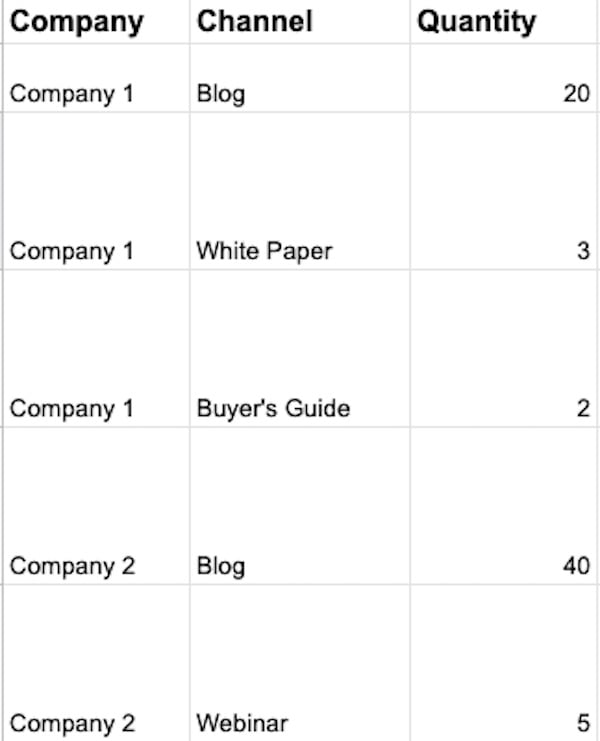
Note these details on your spreadsheet.
What keywords are they targeting?
If you use SEMrush, SpyFu, or Ahrefs, you can perform an in-depth keyword analysis of your competitor’s content.
However, a basic, free way to guess which keywords your competitors are targeting is to look at their content titles. The target keyword(s) for a piece of content are usually in the title of the content.
 Source: Gardner
Source: Gardner
For example, if the title of the content is “Stop talking about ‘Hadoop,’” it’s a safe bet that “hadoop” is the target keyword.
Identifying your competitor’s keywords can help you choose keywords you should target in your own content.

As you are skimming your competitor’s content, jot down potential keywords from each title in a new sheet of your competitor audit workbook. Organize these keywords by content type and competitor.
What general topic and specific topics does their content cover?
Before you move on from a piece of content, also jot down the specific topic it focuses on and enter it into your “subtopics” column on the first sheet. 
If they have topic tags (topic labels that help organize content), reference those. They are usually at the top or bottom of the post. If there are no topic tags, look at the title.
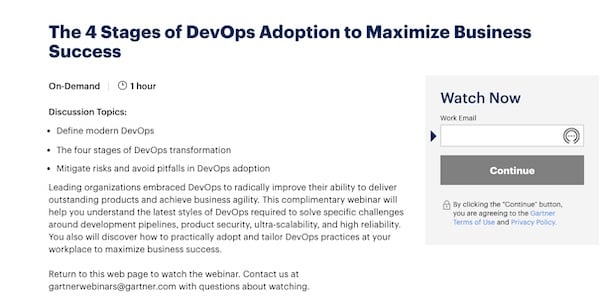 Source: Gardner
Source: Gardner
For example, the topic of the example above might be “stages of DevOps adoption.”
Understanding what topics your competitors have already covered in detail can help you plan your own content.
What is the quality of their content?
- Is it well written (readable) and researched (accurate)?
- Does it follow web writing best practices?
- Are there typos or other errors?
- For videos or audio content: How good is the sound? How are the production values
- What is the tone? (friendly, professional, formal)
- What is the length? (short, medium, long)
- What are their areas of expertise? You can judge this from the topics they write about, their service pages, and their author bio information.
- Do they require a form to access?
- How often do they post? You can judge this from their publish dates.
- If the content includes author bios, are the authors part of that business’s team, or are they a guest blogger or freelancer?
- How do readers interact with the content? (comments, shares, likes) To what extent?

Based on the answers to these questions, note this information on your spreadsheet for each competitor:
- Content tone (professional, casual, formal)
- How often they post each type of content (for example, 1 blog post per month)
- Quality score (high, low, medium)
- Quality details: Briefly note how much readers interacted with the content, if at all (3 shares, 4 likes, 10 comments), readability, depth of content, length of content, quality of video and audio, or any other important details.
Evaluating the quality and style of your competitor’s content can help you learn from their successes and identify areas where you can do better. It can also help you gauge how easy it will be to outperform your competitors in organic search.
How is the blog laid out?
 Source: Madison Marketing Group
Source: Madison Marketing Group
- Is it easy to get around their blog? How is it organized? The quality of their blog can be an indicator of how much effort a business puts into their content strategy.
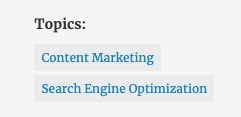
- Are posts organized with topic tags (topic labels, often found at the top or bottom of a page)?
 Share bar; Source: Content Marketing Institute
Share bar; Source: Content Marketing Institute
- Is there a share bar (which allows them to share the post on social media)?
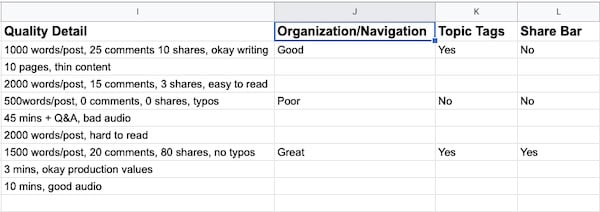
Make note of the presence of absence of these details in separate columns.
A high-quality blog that provides a good user experience may be harder to outshine than a blog that is not easy to use.
How’s their SEO?
This may be a hard question to answer if you’re not comfortable with the nitty gritty of search engine optimization techniques. To learn more about SEO, check out our free search engine optimization guide.
If you are familiar with SEO, evaluate their on-page and technical SEO. One of the tools mentioned in the previous section can do the heavy lifting for you. Or you can use HubSpot’s website grader as a less detailed but free option.
The strength of a site’s overall SEO and the on-page SEO of individual pages affects their ability to rank in search results.
3. Use the findings to inform your content strategy
Now that you’ve analyzed your competitor’s content and SEO, you can apply this data to your own content strategy.
A. Perform a content gap analysis
Review the data in your spreadsheet for your competitor content.
Identify topics and subtopics your competitors have skimmed over. These are important subjects that have not been written about in detail, but interest your personas.
The process of identifying these opportunities is called a “gap analysis” because you are finding gaps in the conversation that your content can fill.
To identify these gaps, ask these questions of your competitor’s content:
- What topics/subtopics haven’t they covered?
- What topics/subtopics haven’t they covered thoroughly?
These topics offer you the opportunity to satisfy potential clients’ needs for information before your competitors realize their mistake.
B. Identify keyword opportunities
Look at the keywords they seem to be targeting. If it looks like a topic that would interest your persona, look it up in Google Keyword Planner or Ahrefs, for example, to see its competition level, search volume, and other data.
Are they ranking well for that keyword? If so, don’t go after it. If not, create better content than them and see if you can rank for it.
C. Learn from their mistakes
Is the content poor quality? Write something higher-quality, easier to read, more original, better researched, more thorough, better illustrated, and scrupulously copy-edited.
Do they have holes in their SEO? Make sure your site is in tip-top condition
Do they provide a poor user experience? Do they provide a poor user experience? Make sure that your site employs modern design and is easy to use.
D. Learn from their successes
Go to school on your competitor’s successes as well as their mistakes.
- Do they have features on their site that make it easier to use, such as topic tags? Make sure you have them too.
- Do they have features on their site that make content easier to share or engage with, such as comments sections or share bars? Add them to your site, if possible.
- Do they write in a style or tone that your persona responds to? Emulate their style.
- Do they have a website with sleek, modern design? Make sure your design is up-to-date.
Conclusion, final thoughts, and next steps
And there you have it: a step-by-step guide to conducting a simple competitor content audit.
By finding important subjects your competitors have skimmed over, you have the opportunity to rank ahead of your competitors with compelling content that satisfies the needs of potential customers and generates leads for your business.



